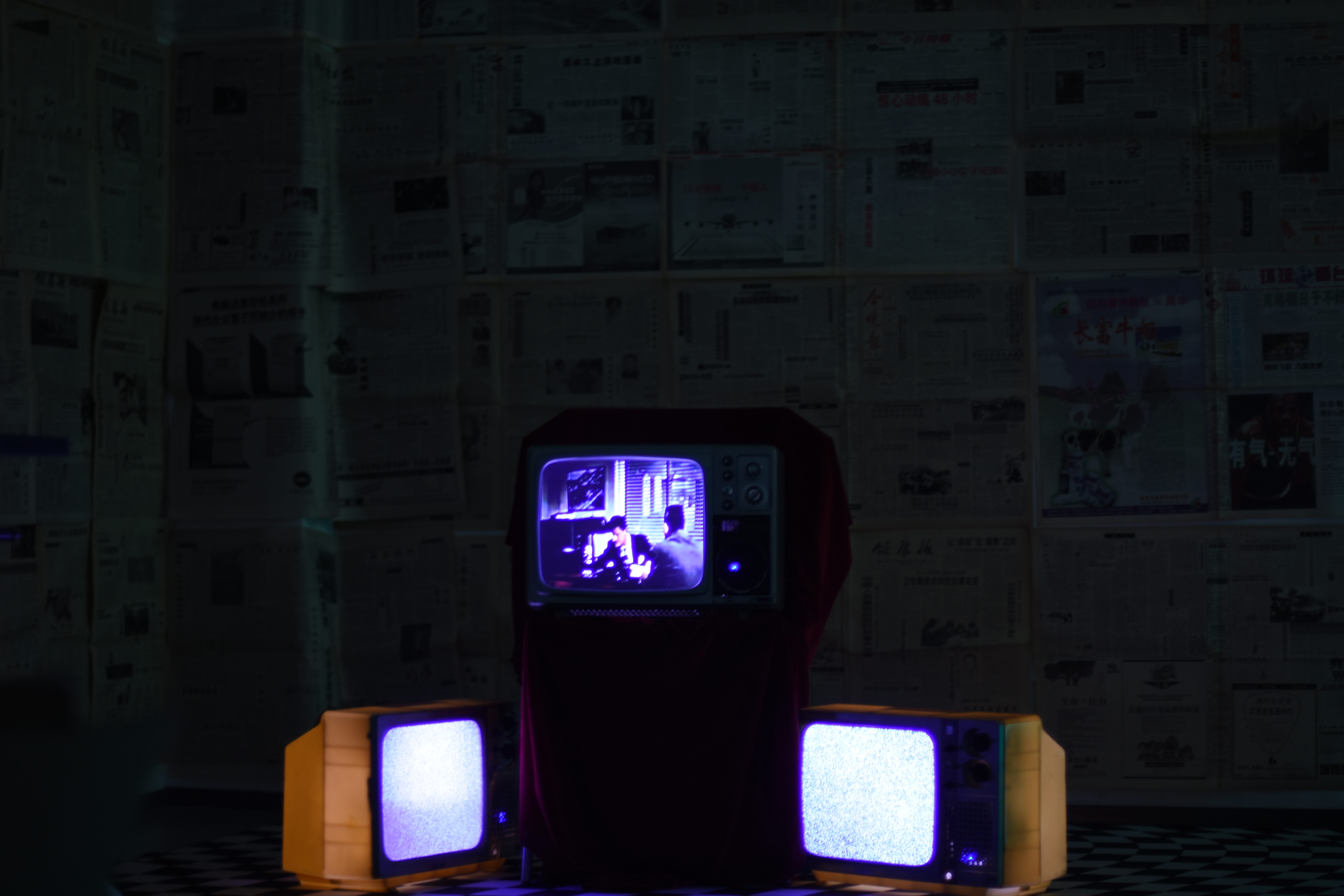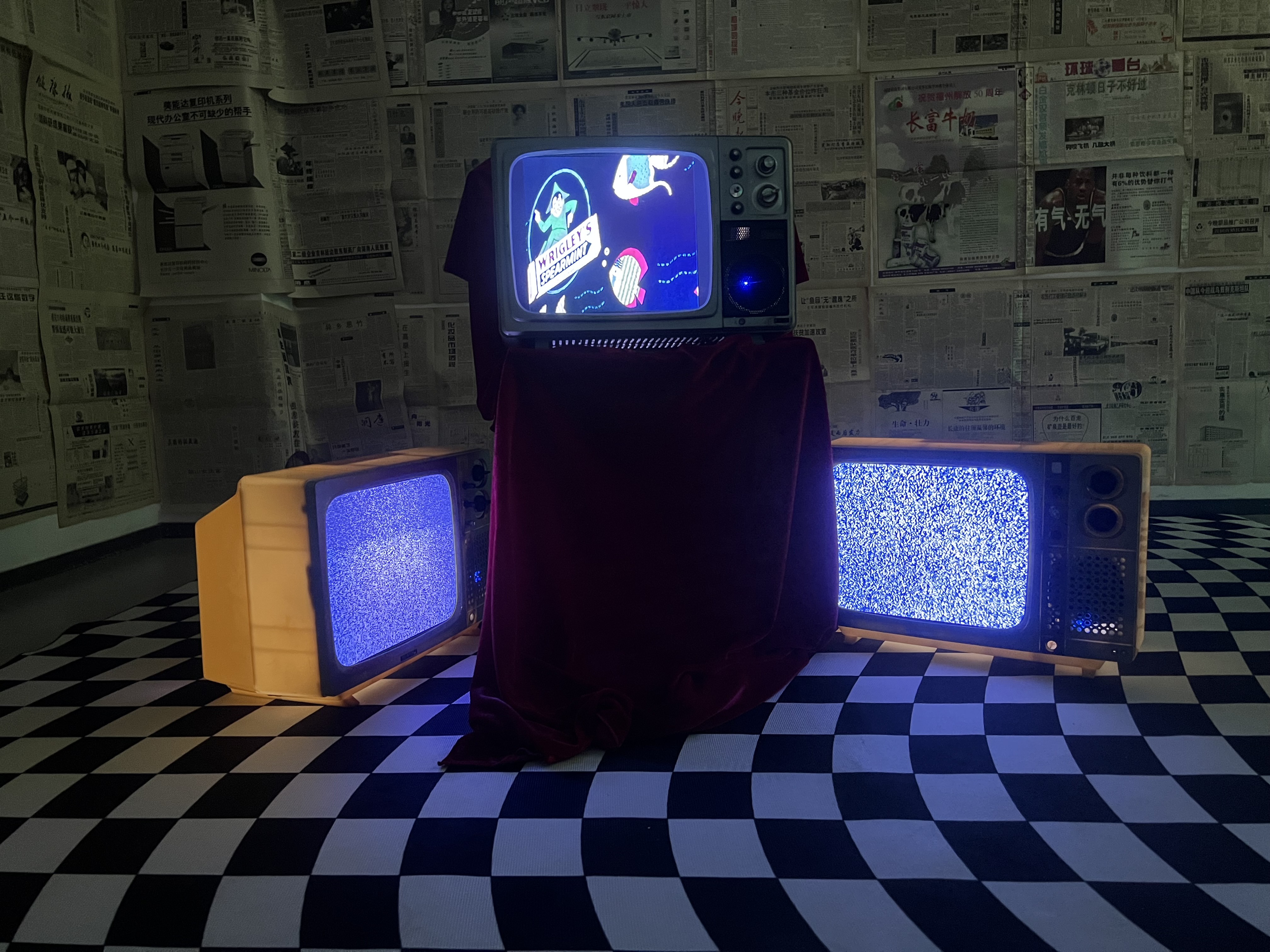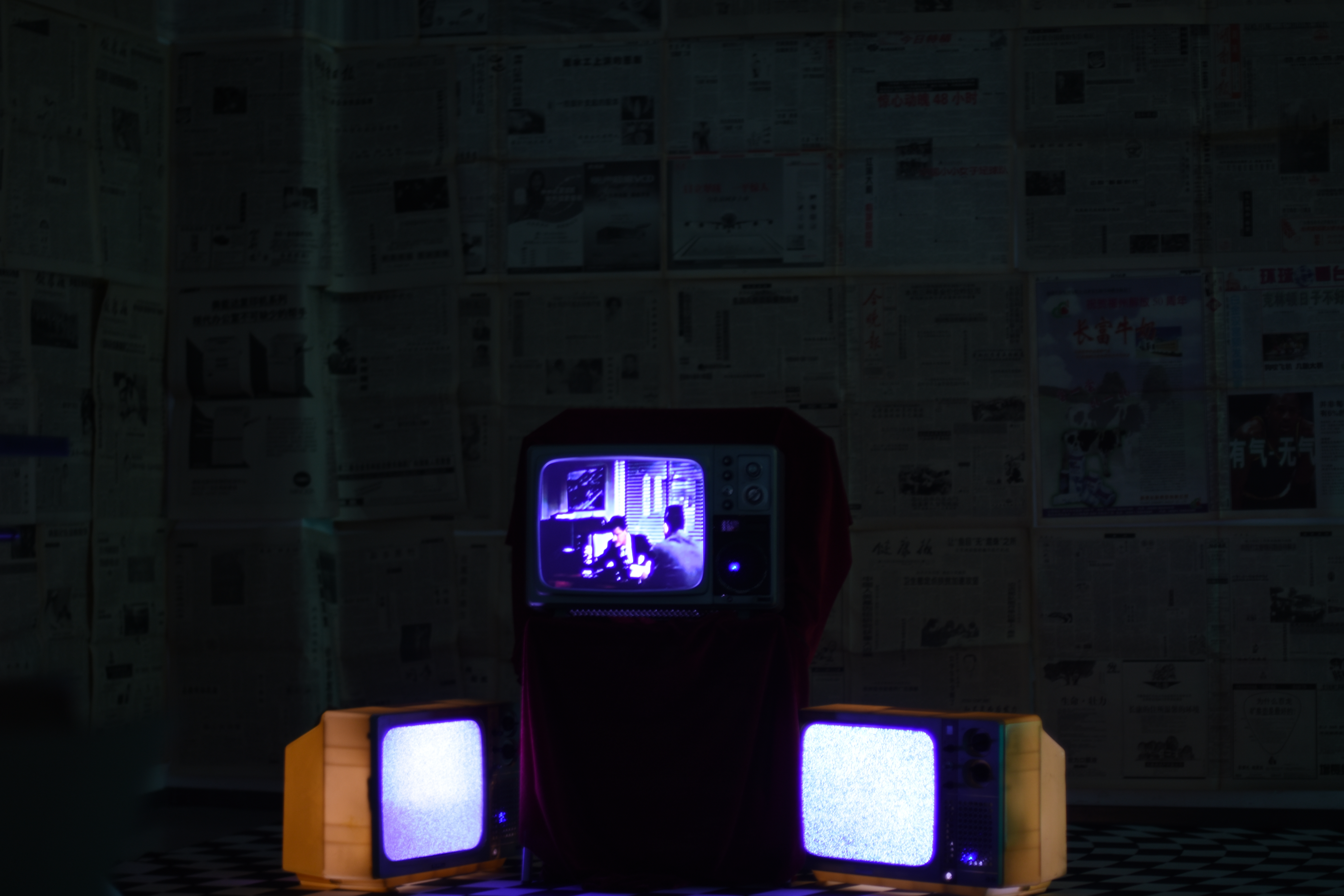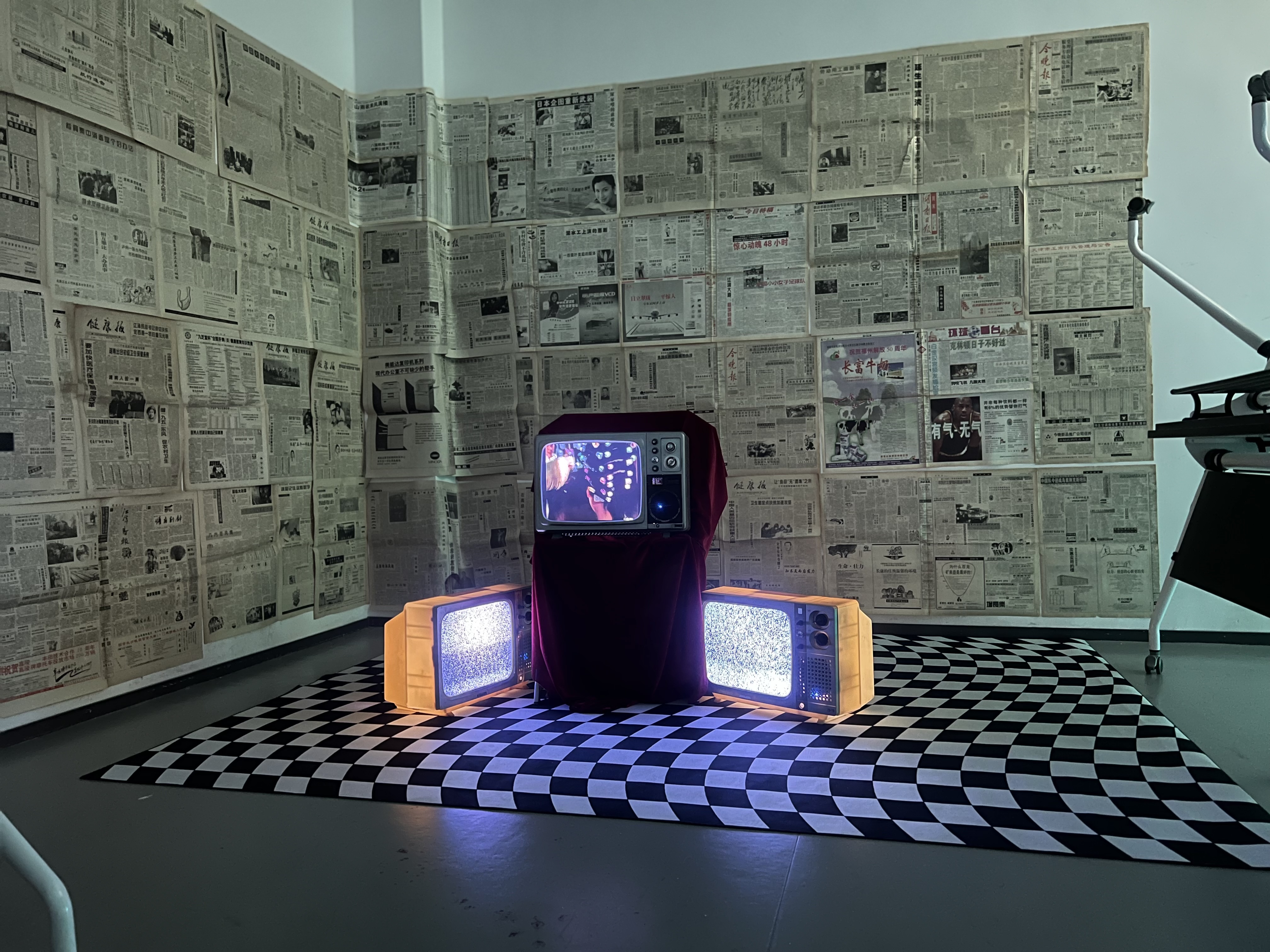In the era of rapid development of information, the links between people gradually become thin. Information explosion, information iteration and the social convenience brought by smart phones have also set up more barriers between people, and society and communities are facing memory trauma and the lack of interpersonal relationships and the redefinition of community links. In this thesis, I explore this issue in this art installation. The unreliability of memory, the breaking of interpersonal bonds, and communal trauma are explored through the use of an old television, a checkerboard carpet, and a space plastered with old newspapers. Inspired by Kazuo Ishiguro’s theory of ‘unreliable memory’, the fragility of the shimmering light of memory, and the phenomenon of social disappearance, the work attempts to show how people and events that have been erased, distorted, or evaporated have left noisy traces in the collective consciousness. The old TV on the red velvet cloth symbolises the symbolic objects of the twenties. In contrast, the two snowflake TVs on the floor represent distorted memories, untold stories, and the gaps left by the ‘evaporated’. The noise of the snowflake screens is both the failure of the electronic medium and the blurring and disturbance of memory itself, suggesting how the existence of those who have not been properly preserved fades in time. The checkerboard carpet constructs a regimented memory field, the black and white checkerboard floor with the disco trend of the late nineties. The layers of old newspapers around the installation create a sense of information suffocation. On the whole, this installation is an archaeological site of memory, where the juxtaposition of noise, residual shadow and text allows the audience to face the unreliability of memory and the continuity of trauma. The ‘absence’ of the ‘evaporated’ becomes the strongest presence in the room, while the rupture of interpersonal connection is revealed in the failure of the medium. Ultimately, it asks how we can be sure what disappearance is real and what presence is an illusion when memory becomes noise. The art installation described in this paper does not solve the problem, but rather, through the noise of memory, fractured media and stranded narratives, forces the viewer to confront the evaporated, but never truly disappeared, presence of every individual to collective trauma.





